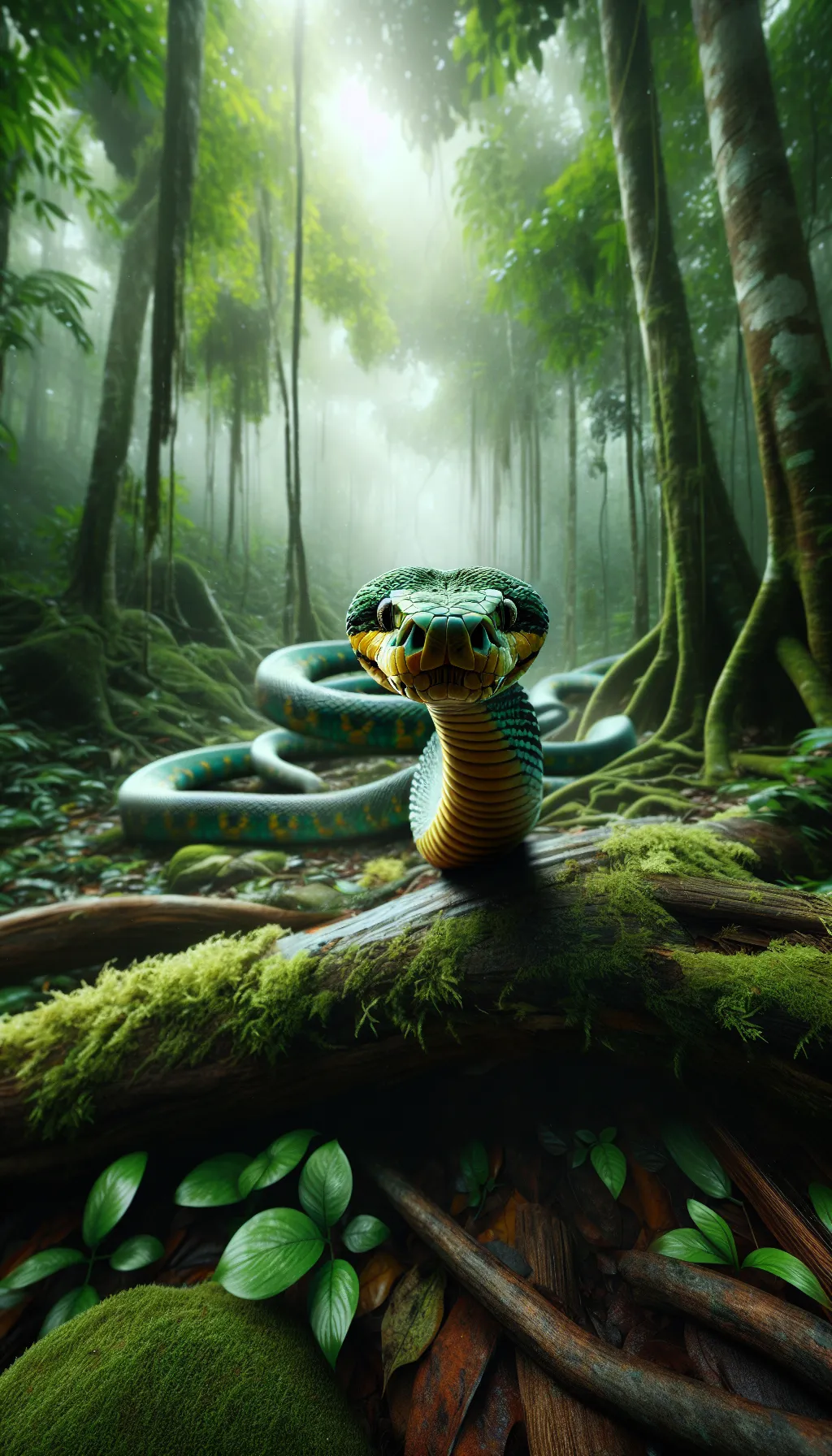The Jararaca
The Jararaca, also known as the Bothrops jararaca, is a venomous pit viper snake found in South America. It has a distinctive triangular-shaped head, vertical pupils, and a brownish-gray coloration with dark brown spots along its body. They are responsible for a significant number of snakebite incidents in Brazil due to their potent venom.

| Jararaca | |
|---|---|
| Size | Up to 5 feet (1.5 meters) |
| Weight | Up to 2.2 pounds (1 kilogram) |
| Speed | 12-15 mph (19-24 km/h) |
| Key Strength | Venomous bite |
| Biggest Weakness | Short striking range |
| Scientific Name | Bothrops jararaca |
| Family | Viperidae |
| Habitat | Forests, grasslands, and savannas |
| Geography | South America |
| Diet | Small mammals, birds, and amphibians |
| Lifespan | 10 years - 20 years |

The Jararaca
The Jararaca, also known as the Bothrops jararaca, is a venomous pit viper snake found in South America. It has a distinctive triangular-shaped head, vertical pupils, and a brownish-gray coloration with dark brown spots along its body. They are responsible for a significant number of snakebite incidents in Brazil due to their potent venom.
Fun Fact: The Jararaca is known for its ability to sense heat with special heat-sensing organs located on its head, which helps them locate prey even in the dark.
| Jararaca | |
|---|---|
| Size | Up to 5 feet (1.5 meters) |
| Weight | Up to 2.2 pounds (1 kilogram) |
| Speed | 12-15 mph (19-24 km/h) |
| Key Strength | Venomous bite |
| Biggest Weakness | Short striking range |
| Scientific Name | Bothrops jararaca |
| Family | Viperidae |
| Habitat | Forests, grasslands, and savannas |
| Geography | South America |
| Diet | Small mammals, birds, and amphibians |
| Lifespan | 10 years - 20 years |
Jararaca Matchups
We use AI to simulate matchups between the Jararaca and other animals. Our simulation considers size, strength, and natural predatory behaviors to determine the most likely outcome.
Jararaca: Diet, Predators, Aggression, and Defensive Behaviors
What do they eat?
Jararacas are carnivorous snakes and primarily feed on small mammals, birds, frogs, lizards, and other reptiles. They are ambush predators and use their venom to kill their prey before consuming it.
Do they have any predators?
As adults, Jararacas do not have many natural predators due to their venomous nature. However, young Jararacas may fall prey to birds of prey, large mammals, and even other snakes.
Are they aggressive?
Jararacas are known to be relatively aggressive snakes when provoked or threatened. They will strike quickly if they feel threatened, and their venom can be quite potent.
Do they fight?
While Jararacas do not actively seek out fights, they will defend themselves if necessary. When facing a threat, they will likely strike with their venomous bite in an attempt to ward off the predator or aggressor.
How do they defend themselves?
In addition to using their venomous bite as a defense mechanism, Jararacas may also use their camouflaged coloration to blend into their surroundings and evade predators. They may also retreat to a hidden location if they feel threatened.
What is their biggest weakness in a fight?
Despite their venomous bite and defensive capabilities, Jararacas do have weaknesses. One major weakness is their vulnerability to larger predators or threats that can overpower them physically before they have a chance to strike. Additionally, their limited mobility and reliance on their venom to incapacitate prey can be a weakness if their venom does not have the desired effect.
Fun Fact: Unlike some other snakes, Jararacas give birth to live young rather than laying eggs, with each litter usually consisting of around 20-30 offspring.
Fun Fact: When threatened, the Jararaca will often coil tightly and strike with lightning speed, injecting its potent venom into its prey or predator.










